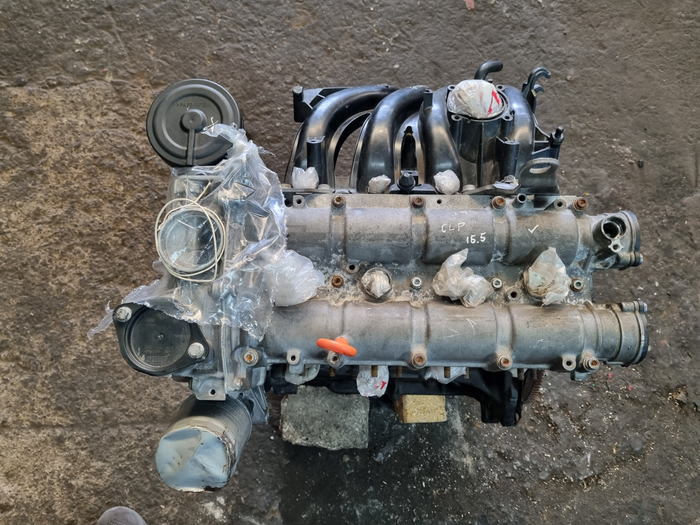Increase fuel efficiency with a top-tier clp engine.
Increase fuel efficiency with a top-tier clp engine.
Blog Article
How a Clp Engine Can Boost Efficiency in Numerous Industries
The development of CLP engines marks a significant shift in functional performance throughout various industries, driven by their capability to maximize gas consumption and minimize downtime. As organizations progressively focus on sustainability along with efficiency, the role of CLP engines becomes even a lot more essential.
Review of CLP Engines
CLP engines, or Continual Liquid Propellant engines, stand for a considerable improvement in propulsion innovation, particularly for space applications. These engines make use of a constant feed system that enables for the sustained expulsion of propellant, bring about boosted performance and performance contrasted to standard solid or hybrid propulsion systems. By maintaining a consistent flow of fluid propellant, CLP engines can attain extra precise thrust control, which is important for maneuvering spacecraft in various mission situations.
The design of CLP engines incorporates innovative products and cutting-edge gas monitoring systems. clp engine. This causes reduced weight and increased reliability, essential variables for long-duration area objectives. Additionally, the constant operation reduces the risk of burning instability, a typical challenge in standard rocket engines.

Advantages in Production
The production of Constant Liquid Propellant (CLP) engines provides a number of significant advantages that enhance both efficiency and cost-effectiveness. Among the key advantages is the streamlined production procedure, which reduces the intricacy related to standard propulsion systems. By using liquid propellant, manufacturers can attain better precision in engine performance, leading to optimized energy result and reduced waste.
Additionally, CLP engines help with a greater degree of modularity, enabling much easier combination into different production lines. This versatility can considerably decrease preparations and improve total operational versatility. Using CLP modern technology likewise tends to decrease the requirement for extensive upkeep because of fewer relocating parts, which converts into lowered downtime and operational costs.

Applications in Logistics
Leveraging Constant Fluid Propellant (CLP) engines in logistics provides considerable advantages in functional effectiveness and integrity. my site These engines supply a robust option for different transport requirements, making it possible for the seamless movement of items across huge distances. The fundamental layout of CLP engines enables constant power outcome, which equates into smoother and more foreseeable transport routines.
Among the crucial applications of CLP engines in logistics is in sturdy freight transportation, where they can drive both ground and aerial cars. Their capacity to maintain high performance under differing load conditions guarantees that distribution timelines are met, therefore enhancing consumer fulfillment. Additionally, CLP engines can be integrated right into automated logistics systems, helping with real-time tracking and enhancing course preparation.
Moreover, the sturdiness of CLP engines reduces upkeep downtime, enabling logistics business to maximize their functional capacities. This is particularly useful in warehousing operations, where efficiency in taking care of and moving items is essential. As logistics remains to advance, the assimilation of CLP engines represents a forward-thinking technique that not only enhances performance but also supports the market's expanding needs for dependability and rate.
Influence On Power Effectiveness
How do Constant Fluid Propellant (CLP) engines boost energy efficiency in transport? CLP engines use a consistent circulation of fluid gas, maximizing combustion processes and preserving a stable thrust result. This design lessens energy losses related to traditional combustion engines, where gas shipment can vary and result in ineffectiveness.
The constant operation of CLP engines enables for a much more effective thermal cycle, resulting in greater particular impulse contrasted to conventional engines. clp engine. This equates to reduced fuel usage for the same amount of work done, substantially reducing operational expenses across various transport sectors, consisting of air travel and maritime industries
Furthermore, the capacity of CLP engines to keep optimal performance under differing load problems minimizes the requirement for frequent acceleration and slowdown, even more improving gas performance. Enhanced power performance not just adds to cost financial savings however additionally leads click for info to reduce greenhouse gas exhausts, lining up with international sustainability objectives.
Future Trends and Innovations
Emerging developments in Continuous Fluid Propellant (CLP) engine innovation guarantee to revolutionize the landscape of transport performance and sustainability. As industries pivot towards greener alternatives, CLP engines stand at the center, incorporating innovative materials and design approaches that enhance efficiency while lessening ecological influence.
Among one of the most appealing patterns is the adoption of hybrid systems that combine CLP engines with sustainable energy resources. This synergy can enhance gas intake and lower emissions, aligning with worldwide sustainability objectives. In addition, developments in computational fluid characteristics (CFD) are facilitating the layout of more aerodynamically image source reliable engines, bring about reduced drag and improved gas effectiveness.
Moreover, the advancement of wise surveillance systems is readied to boost functional effectiveness. These systems take advantage of information analytics and IoT technology to maximize engine efficiency in real-time, ensuring that the engines operate within their most reliable criteria.
As research remains to discover alternative propellant solutions-- such as biofuels and synthetic fuels-- the future of CLP engines looks promising. By utilizing these developments, sectors can not only improve their efficiency yet additionally contribute dramatically to a cleaner, more sustainable future in transport.
Final Thought
In conclusion, CLP engines stand for a considerable development in performance across multiple sectors. The combination of sophisticated materials and fewer moving parts reduces upkeep requirements, while placement with sustainability objectives positions CLP engines as a crucial technology for the future.
Report this page